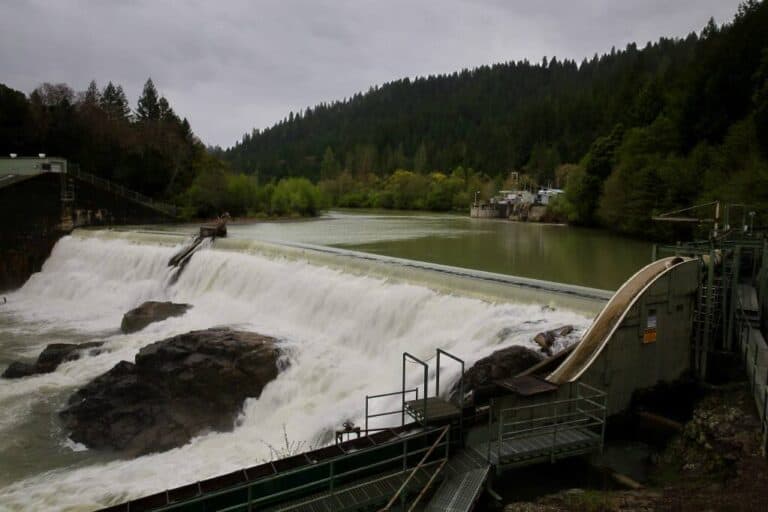After the first few rains, our Sonoma County landscape transforms from parched golden brown to rich hues that host a world of vibrant new growth. A celebration is not only warranted for us seeing all this glorious new growth but also creating distance through time from another record setting drought. Water reservoirs this year have been full even before the beginning of our rainy season, and help us usher in the cool green of winter and reassure us there will be more time for wonderment before the risk of another wildfire season creeps in.
As we notice the abundance of stormwater filling the creeks and rivers and appreciate the beauty we are immersed in, we don’t typically delight in the thought of stormwater or the infrastructure that is needed to treat or hold it so that we have less flooding and clean healthy water pulsing through these precious local waterways.
What is the meaning of stormwater infrastructure to you? Does it bring to mind giant unseen concrete pipes, outfalls flowing under roadways dropping turbid water into nearby creeks? Does it look like uninhabitable surface water, or just plain dirty runoff?
What is stormwater
Stormwater essentially is water that flows over impervious surfaces during a rain event. Typically, it does not easily soak into the ground but rushes off our urban hardscape such as rooftops, parking lots and paved roads. It moves with such force that oftentimes it picks up and conveys pollutants like trash, chemicals, leaves, oil, and fine sediment which all have the potential to harm our waterways and the wildlife that depend on healthy water quality as their habitat.
Stormwater meets LID
Stormwater infrastructure is not just the typical concrete pipes, outfalls and storm drains seen around towns and cities. This infrastructure has developed over time into an integrated and even attractive part of our urban landscape. You may often pass by a stormwater feature and think it is just landscaping. These features, known as Low Impact Development (LID) treat stormwater but blend in with the natural landscape.
Since its inception, in the mid-1980s, LID has become much more than just detention ponds. In 2005, Low Impact Development emerged in Sonoma County when rain gardens and rainwater harvesting began infiltrating residential areas. The catchy phrase that encouraged the use of these systems, hearkens back to the early 2000’s when water saving partnerships encouraged us to Slow It, Spread It, Sink It. This reference to stormwater was our first taste of LID and how to manage stormwater in our urban environment.
LID throughout the watershed
Now LID, which was created to develop more sustainable methods for managing and treating stormwater for growing urban areas, is required for any development that […]
Full article: www.ukiahdailyjournal.com

